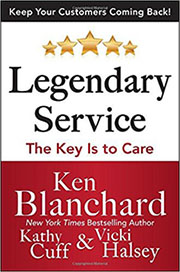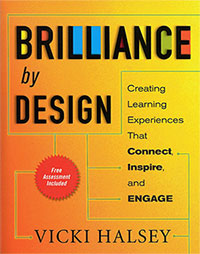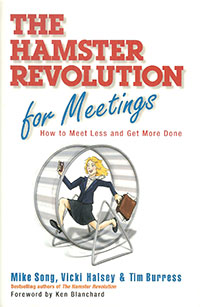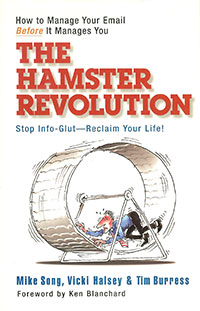|
By Vicki Halsey, Ph.D., Vice President, Applied Learning, The Ken Blanchard Companies By all accounts, the corporate training market in the United States is more than $100 billion. Still, according to a recent workplace survey by the American Psychological Association, just 44 percent of working Americans say they are satisfied with their employer’s training and development opportunities. True confession: I’m not the least bit surprised. In fact, when peering into hundreds of corporate training rooms over the years, I’ve often been reminded of the characters in the classic 1950s science fiction film, Invasion of the BodySnatchers: people sitting eerily still, nothing more than a stone cold look in their eyes. What are such squandered efforts costing our organizations? In all probability, millions of dollars, year after year, in poor work performance and lack of transfer from learning to doing. It’s time, then, to fix workplace learning and teaching. But how? By engaging all learners with a “new school” model—one that rigorously and systematically brings out the innate brilliance in everyone and sets people and businesses up to succeed. Six Steps to Bring Out the Brilliance Brilliance is not a random act. It’s the result of a conscious and critical intersection between people, content, and design. First, we must know people’s needs, experiences, and preferences. Second, we must craft content based on what learners need to learn, practice, and do to deliver business results. And, finally, we must create high-energy designs with a variety of interesting, interactive activities and with respect to all learning styles. In short, we must say goodbye to “sit and git”—the old, misguided learning model so ingrained in our workplace culture—and say hello to ENGAGE. A six-step learning model, ENGAGE is an all-new framework designed to ensure that no learner’s brilliance is left unknown, unnoticed, or untapped. Ready to get started? Step by step, here’s how: Step 1: Energize learners. Get people energized before the learning session even begins. Send an advance e-mail, perhaps from a reaffirming senior-level executive. Provide a sneak peek to the material. And prime the pump with Web links to related articles and podcasts. Also, come starting time, get learners talking right away by asking them thought-provoking questions. Depending on your topic, you might ask, “Does the world really need leaders, and if so, why?” or “What makes a great team great?” Have people write down their responses on flip charts or white boards so you can refer back to them throughout the program. Step 2: Navigate content. As a facilitator, one of your most important roles is to assess how every learner can show up in the way that he or she is smart by working with each person’s natural learning preference. Know who’s a visual learner, responding best to watching videos or creating charts and graphs. Know who’s an auditory learner, responding best to lectures or discussions. And know who’s a kinesthetic learner, responding best to moving around and actually practicing what he or she is learning. In other words, navigate your content in a multitude of ways—the more variety, the better. Step 3: Generate meaning. Move the learning from short-term memory to long-term memory by helping people “sell” themselves on the significance of the new content—its true value and purpose in their own world. One idea is to break learners up into small groups and ask them to share their single most important new learning and why it is valuable to them. Have a spokesperson from each group report on the findings. Step 4: Apply to the real world. Too often we teach people what we want them to know, yet don’t ask them to demonstrate their knowledge in the framework in which they’ll ultimately use it. If you need people to learn a new system, implement a new process, or sell a new product, have them practice what they’re learning in a real-world context. Many teachers skimp on this step or skip it altogether, assuming that people will turn their learning into action themselves. Big mistake! Step 5: Gauge and celebrate. Repetition is the secret to moving from learning to doing. Having people assess and celebrate what they’ve learned will give them another chance to review and create an even deeper neural connectivity. Celebrate in fun, interactive ways, such as a Jeopardy-style game show or a “Koosh Ball Review,” where learners toss a Koosh ball and test one another on their takeaways. Another technique is to circle the room asking people for “3-2-1”: three terms they’ve learned, two ideas they want to learn more about, and oneconcept or skill they think they’ve mastered. Step 6: Extend learning to action. Create a space where people consistently act on their best intentions and put their learning to work. “Tip of the Week” e-mails, buddy systems, and games or contests are just some of the ways to keep the learning alive. Additionally, a “Lunch and Learn” series can help learners review and reengage with the content. Participants can watch a short video, discuss an article, or share their struggles and successes in applying their learning. The format can be flexible; you can connect online, in person, or by telephone. The Time for Brilliance Has Come Learning can transform individuals and organizations. And teaching, in any forum, is the art and science of bringing out the brilliance that drives those transformations. Are youbringing out the brilliance in your learners? Vicki Halsey, Ph.D., is vice president of Applied Learning at The Ken Blanchard Companies and author of “Brilliance by Design: Creating Learning Experiences That Connect, Inspire, and ENGAGE” (Berrett-Koehler). For more information, visit vickihalsey.com or e-mail . |






